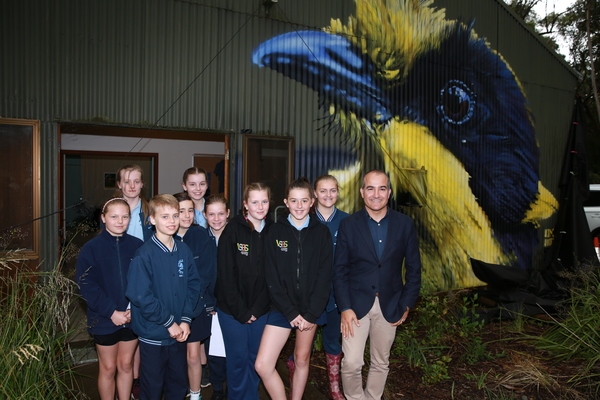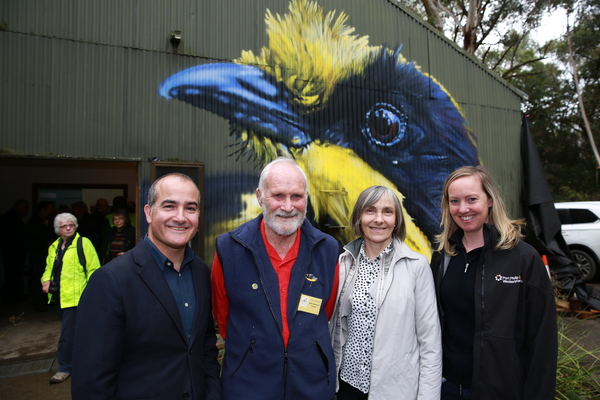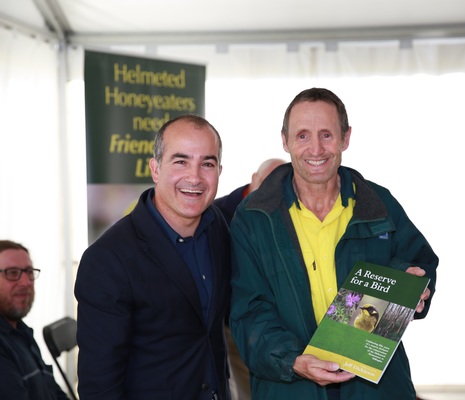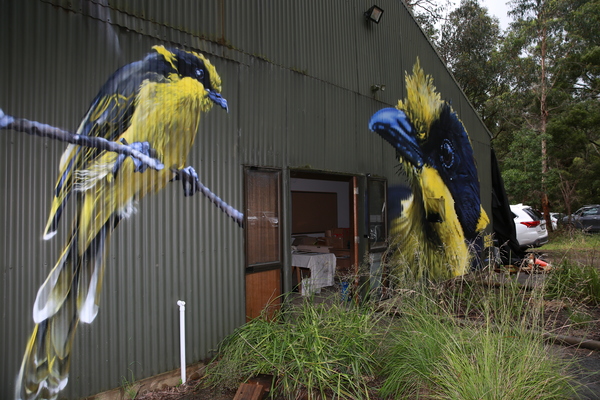
By Derek Schlennstedt
A new parcel of land, a historical book and an intricate mural are the newest additions to the Yellingbo Conservation Reserve announced on Friday 8 December.
The announcements coincided with the 150-year anniversary since ornithologist John Gould named the helmeted honeyeater, and the 50-year anniversary since the Yellingbo reserve was opened in 1967, to help repopulate helmeted honeyeater and lowland Leadbeater’s possum numbers.
Local member for Monbulk and Minister for Education and Emergency Services James Merlino attended the announcement at Yellingbo reserve and commended the purchasing of the new land as a great example of teamwork.
“This is really a partnership -The Victorian Government, Federal Government, Trust for Nature, the local communities … it is a great example of government, the community and organisations all working together, Mr Merlino said.
The new parcel, aptly called Burrungma Biik, a Wurundjeri word meaning misty lands is 2.3 hectares in size and once revegetated will be able to sustain 24 – 30 of the birds.
Ben Cullen, of Trust for Nature which contributed publicly raised funds to purchase the extra 2.3ha of the Yellingbo Reserve, hoped numbers could rise to 250 in two years.
“They have lost a lot of their habitat, so we’ve been trying to find ways to protect and retain the swampy, flood plain land they favour,” Mr Cullen said.
To celebrate the important two anniversaries, a mural of the state faunal emblem, the helmeted honeyeater was painted onto the large depot shed at Yellingbo and a book detailing the history of Yellingbo reserve was also created.
Bruce Quinn DELWP senior ornithologist said breeding numbers of helmeted honeyeater had eclipsed previous year’s records, and he was confident the new land would help continue that trend.
“We have confirmed a record number of breeding pairs … 33 breeding pairs, but there still may be more to confirm – this has already eclipsed the previous record.”
“The total population is around 200 birds … but what we are really encouraged by is that the birds are moving away from the supplementary feeding areas and breeding successfully – that may be as a result of habitat improvement.”
“Things are looking really good for next breeding season,” he said.









